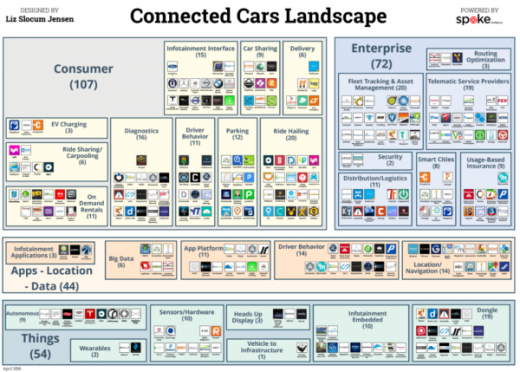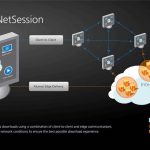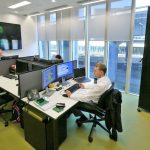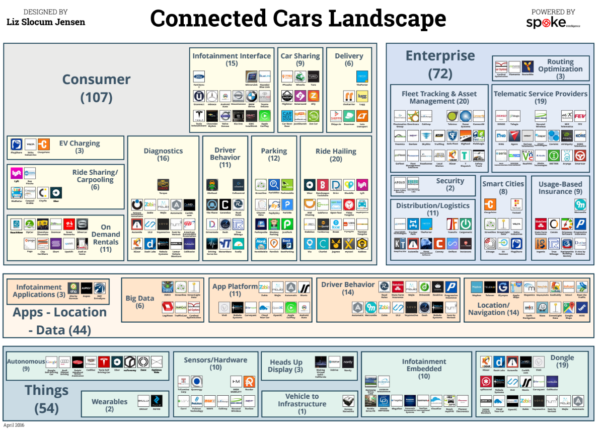Are vehicles the mobile sensor beds of the future?
Are vehicles the mobile sensor beds of the future?

When people think of a car, they think of the thing that gets them from one place to the next. Traditionally they have been just that: a tool with a single function – to get someone, or something, from one place to another.
With the advent of new vehicle designs and the addition of new technology, that is going to change. Just like phones have evolved over the last two decades from a single purpose tool to one with countless functions, vehicles are now undergoing something similar.
New vehicles are being built with an increasing number of sensors. These sensors are not only measuring how the vehicle is operating, but are starting to measure the environmental conditions they are being used in too. Future vehicles will effectively become mobile sensor beds, collecting data, at a granular level, across the whole planet.
The massive amounts of data being generated will be perfect for the application of machine learning. The created algorithms will have an unprecedented level of understanding on how the environments outside the vehicles will change over time,
Imagine a car that selected a playlist based on driving conditions. Or that knew an icy patch was up ahead because the car that drove past that point an hour ago sensed wet road conditions and the temperature has just dropped to the point that it will freeze. These are just the tip of the iceberg on some of the things machine learning will bring to vehicles on the road.
Startups are leading the charge
Current technology tends to revolve around the creation or aggregation of data with an intended future application to machine learning. Nauto and UrbanLogiq are two startups in this space.
Nauto is building a data set to help OEMs and other partners develop the next generation of autonomous capability for vehicles in urban areas. However, their data set also includes things such as road conditions and how they change over time. This could be used, alongside machine learning, in the future to determine when and where cities should do maintenance to optimize their budgets and road safety.
UrbanLogiq is not building a data set, but preparing governments for the arrival smart car technology. They’re building a platform that would integrate data from systems like Nauto with the government’s own traffic sensor data to facilitate responsive traffic light timing. Using machine-learning, this aggregation of data will help city planners understand and predict the evolution of their communities
This month, Google has also made a play in this space to tackle a common pain in city driving – finding where to park. They are using the data they collect to create predictions on where there might be free parking.
Creating an intelligent future
These technologies are just the start of how environment data collected from vehicles will change the world. With millions of vehicles on the roads every day, they will be collecting data everywhere and on potentially everything they come across.
A change that will probably happen in the near future is related to weather data, patterns, and forecasts. Each vehicle could be constantly collecting temperature, pressure, and potentially even wind speed and uploading all that data to a centralized system. With millions of vehicles on the road, you have a geographic data set that is extremely granular allowing strong predictions on how the weather will change over time. With machine vision added to these vehicles, the possibilities increase exponentially, allowing for exact positioning of lightning, and high-resolution, three-dimensional modeling of storm fronts.
Once you have strong weather predictions you can merge the data set with supply chain data. This will allow companies to optimize their supply chain and inventory based on future weather. The concept of shelves being out of stock due to weather or a manufacturing bottleneck due to parts being unexpectedly delayed will become a thing of the past. Companies will be able to leverage the environmental data coming off vehicles to allow them to optimize their operations around future weather.
Another situation you will see is machine learning driven advice on when to schedule events. You might be able to get a warning that by scheduling an event at one time, the weather coupled with traffic will make it take an hour to get there. However, if you schedule it an hour earlier, it may only take 15 minutes.
Environmental sensors could even be merged with sensors monitoring the driver or passengers in the vehicle. Knowledge of what conditions make a driver feel stressed or relaxed could be used to determine when they should drive or be driven for them to feel best.
We can look forward to a future where our vehicles will understand the environments they will be operating in and how that knowledge will be used to optimize our lives.
Allowing vehicles to understand the environment
Rethinking what a vehicle is. Vehicles transitioning from simply a transportation tool to a series of sensors that travel across the world. These sensors could pick up changing road conditions or weather patterns. These large new data sets can then be used by governments (road repairs), insurance, or routing purposes and will allow people to make the best data-driven decisions.

This article is part of our connected cars series. You can download a high-resolution version of the landscape featuring 250 companies here.
The post Are vehicles the mobile sensor beds of the future? appeared first on ReadWrite.
(42)














